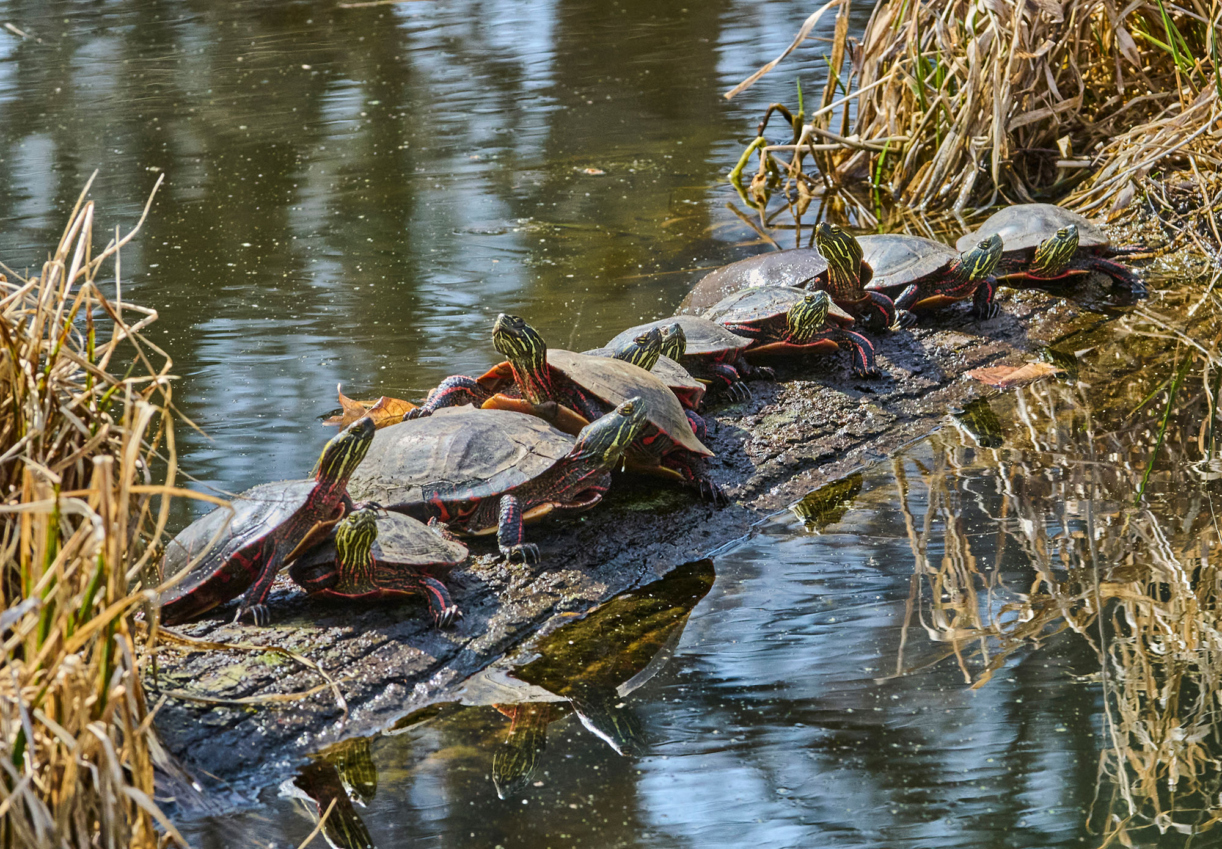
Turtles enjoy the sun in a restored wetland.
On a sunny summer day in a small green pond near the Maple Collection, two dozen painted turtles bask in a row along a fallen log. They probably don’t remember, but a decade ago there was no pond here for turtles. Then The Morton Arboretum’s natural resources staff altered underground drainage pipes to allow the low spot to refill. Now, “the turtles are in turtle heaven,” said Kurt Dreisilker, head of natural resources and collections horticulture.
It’s one example of how the Arboretum’s restoration and stewardship of its varied natural areas and collections supports a wide range of wildlife.
Wildlife monitors, mostly volunteers, track not only turtles but creatures such as frogs, snakes, birds, butterflies, dragonflies, damselflies, moths, and fish. Scientists are helping by counting bees (112 native species) and bats (eight species). Staff and volunteers just reported they have confirmed 54 species of dragonflies and damselflies, including nine that are rare or threatened in Illinois. The Arboretum is also home to many other animals, including squirrels—gray, fox, and flying—as well as beavers, muskrats, chipmunks, foxes, coyotes, and deer.
Monitoring wildlife is essential to understanding how effective restoration and stewardship efforts are in promoting and preserving biodiversity. When native plants, such as those in prairies, oak woodlands, and wetlands, are preserved or restored, they attract native animals. Tracking which animals live in these habitats is a prime indicator of the quality of that area and of what still needs to be done. “We have to know what we have living here so we can manage the landscape well,” Dreisilker said.
For example, a recent assessment of the 19 amphibians and reptiles at the Arboretum noted that it is home to a species of salamander, the Eastern newt, that is losing its habitat in northern Illinois. “The Arboretum has a fantastic population, certainly the largest population in DuPage County, if not the region,” said Susan Lawrence, a volunteer monitor and co-author of the report. The spring peeper, a tiny frog, is found at the Arboretum and few other places in the county.
Why here? The Arboretum, surrounded by highways and subdivisions, offers the amphibians a critical combination of habitats to support their entire life cycle: ephemeral ponds in hilly, oak-dominated woodlands. When the ponds fill up from spring rains, amphibians have the water they need to breed, lay their eggs, hatch, and spend their tadpole weeks, with no fish to eat them. By the time the ponds dry up, they are grown. The adult frogs climb trees and shrubs while the newts seek out muddy spots amid the leaf litter.
Spring peepers, although certainly heard in spring when these tiny frogs issue their piercing mating calls in Bur Reed Marsh and other Arboretum wetlands, are seldom seen, since they are small and inconspicuous. Salamanders live mostly underground. Detecting such wildlife and estimating their numbers requires the persistence, expertise, and ingenuity of a dedicated team of people who often spend years at the task: Frog species have been monitored, by listening for each species’ distinct call, since 2005. Bluebirds have been monitored since 1989, and other birds since 2006.
The recent amphibian and reptile report was compiled by the natural resources staff and volunteer stewards to help guide management practices, both at the Arboretum and in other restoration sites throughout the Chicago region. It considers how the changing climate is affecting the animals’ prospects and needs to inform natural areas management. It also highlights the need for drivers to be careful to avoid running over snakes and turtles as they bask on the warm asphalt of the roads. Yellow “Turtle Crossing” signs installed near wetlands are an effort to alert drivers.
Dreisilker’s team is planning a series of similar reports over the coming years based on the monitoring data.
The monitoring data and reports reveal the range of wildlife that live at the Arboretum in a complex web of life that depends on its trees and plants. The Arboretum can support many different animal species because it includes a variety of habitats that are carefully tended to restore their diversity.
The Schulenberg Prairie, begun in 1962 on a former farm field in one of the first attempts to rebuild a prairie ecosystem in the Midwest, now includes many kinds of grasses, flowers, and trees that support birds, insects, and mammals. Once drainage pipes were removed in other areas of the Arboretum, several wetland areas reappeared.
The East Woods includes many oaks that were already old when the Arboretum was founded in 1922. For years, staff and volunteers have been removing invasive plants such as honeysuckle and buckthorn in the woods and using prescribed burns to open up the understory and encourage native plants and animals to thrive.
Some animals are easy to spot, such as gray and fox squirrels, birds in the treetops, bumblebees collecting nectar from prairie plants, and scurrying chipmunks. Many more are rarely seen, either because they are well camouflaged, live under cover or below ground, or they’re nocturnal, such as bats and flying squirrels.
“Flying squirrels and bats live in tree cavities,” Dreisilker said. “Trees support so many kinds of wildlife, although we only see the obvious ones.”
Other native animals either haven’t found homes at the Arboretum or have yet to be detected. For example, Lawrence is sure there must be water snakes, although they haven’t been found yet. The report identifies several native species of salamander, frog, and snake that might also find suitable habitat at the Arboretum. Dreisilker is hoping that other animals, such as sandhill cranes or bald eagles, might eventually like the look of the place and stop by.
Dreisilker said what he finds most rewarding as he walks through the Arboretum’s natural areas is not the sight of any particular animal. He watches interactions—a hawk chasing a squirrel, a garter snake swallowing a toad. “It’s seeing how everything goes together,” he said, “and seeing that we are providing a healthy habitat for animals to live in their ecosystem.”
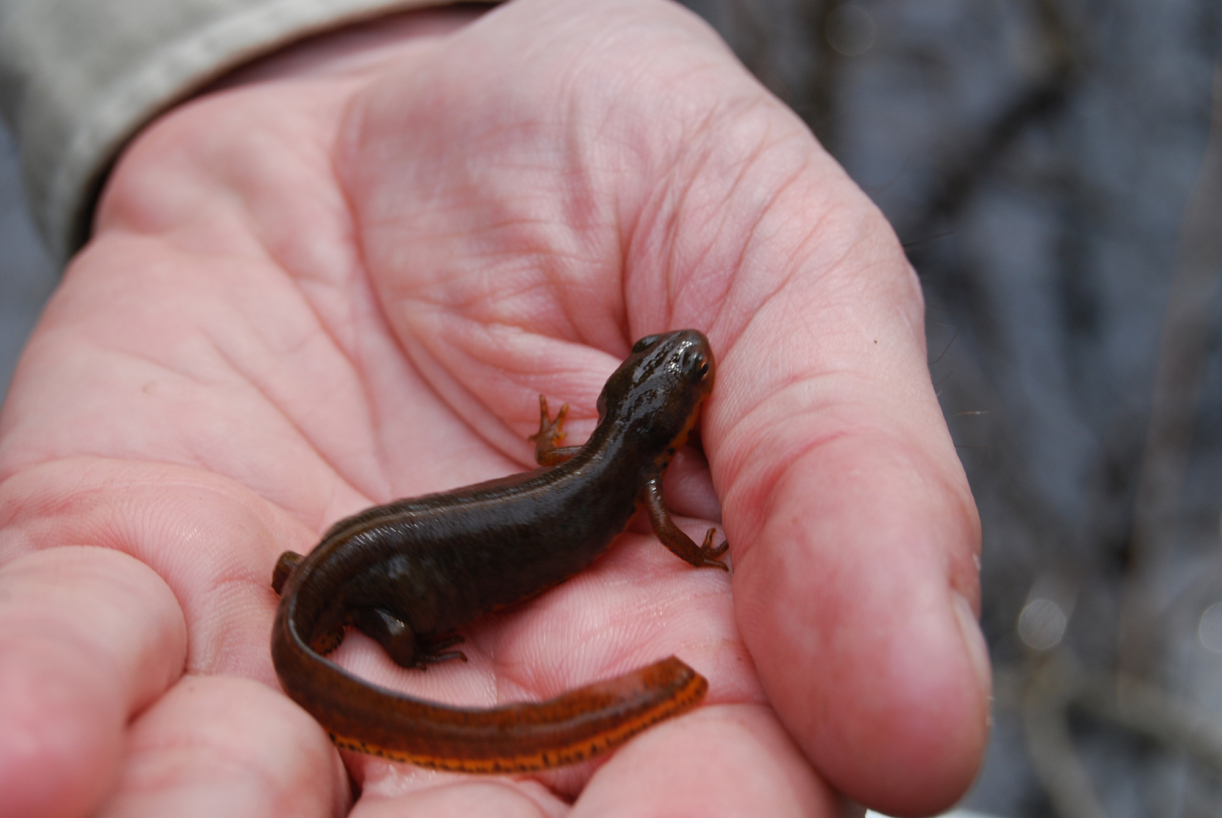
A salamander found at the Arboretum.
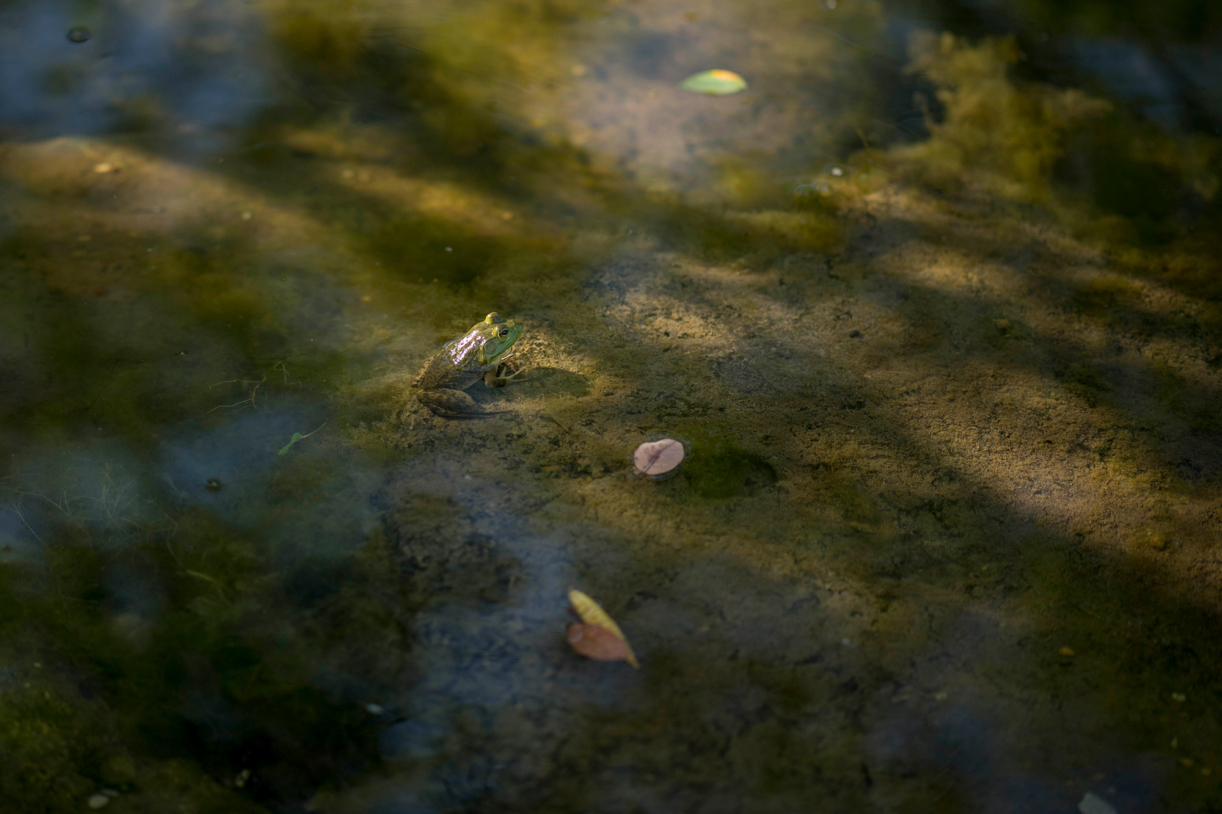
Frogs are abundant in the Arboretum’s wetlands.
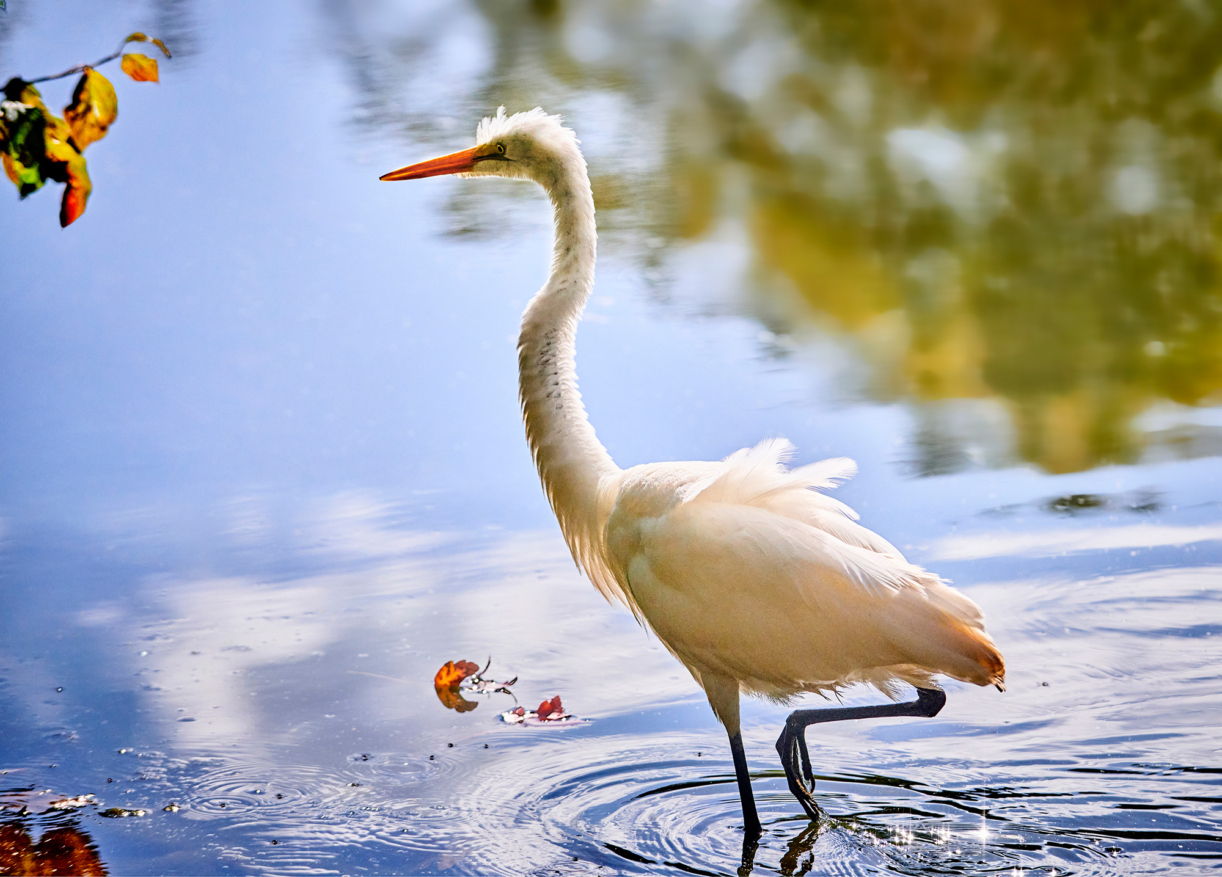
An elegant white egret stalks the shallows at Lake Marmo.
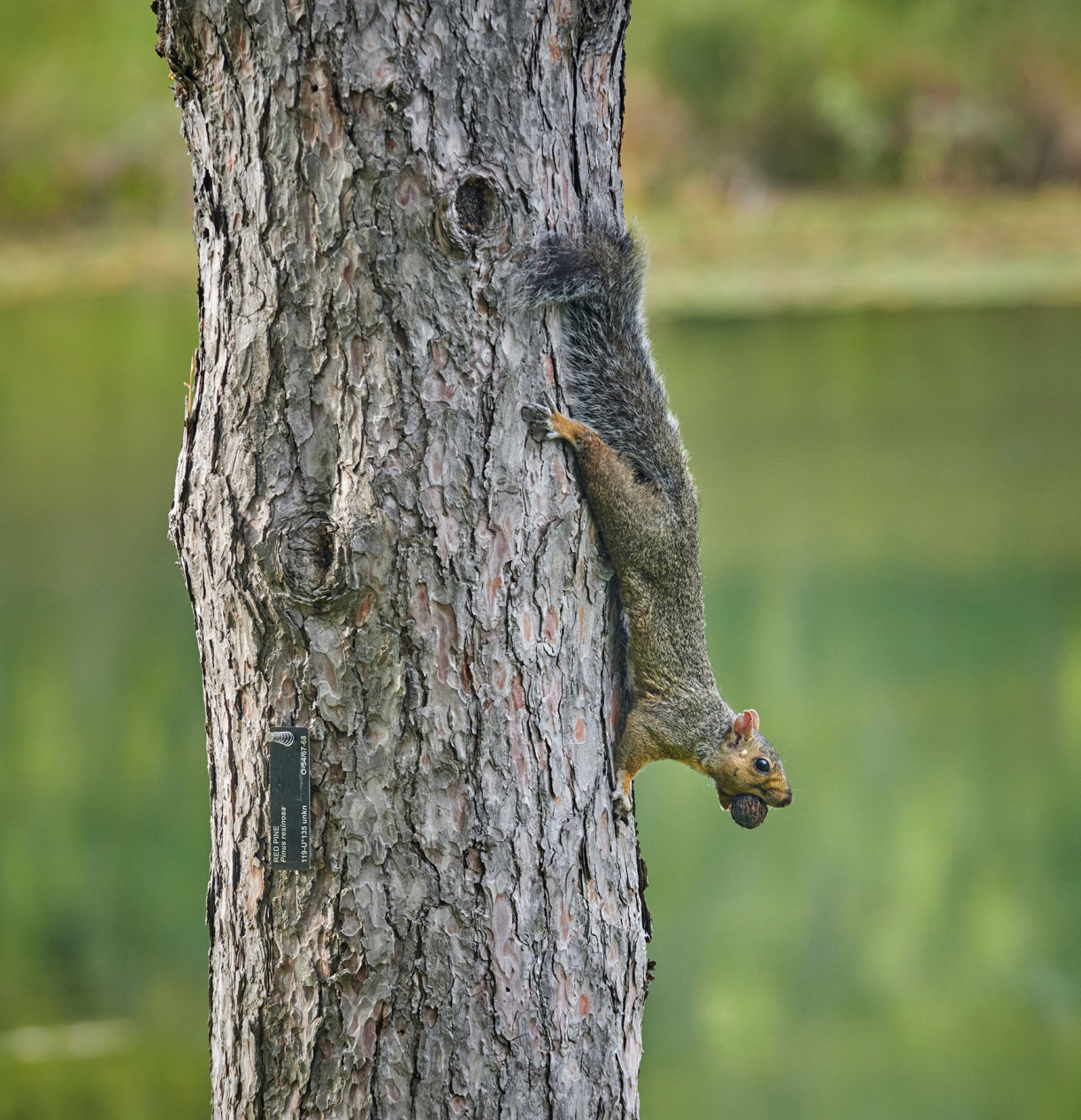
With its oaks other trees, the Arboretum offers a feast for gray squirrels.
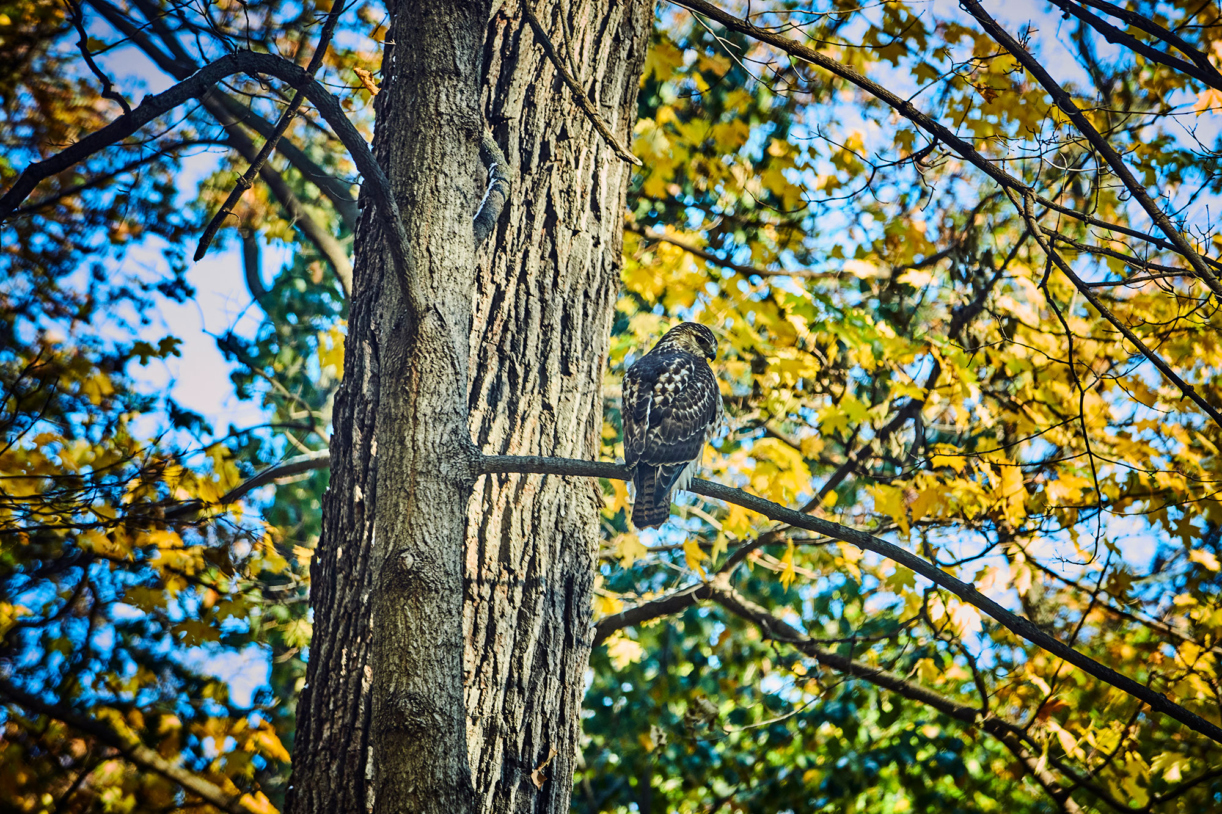
A red-tailed hawk scans the East Woods for prey.